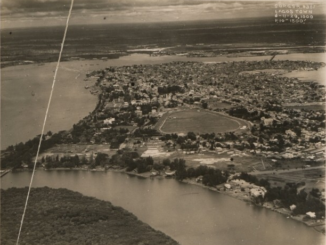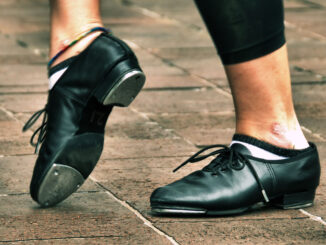
Marcha Thomas-Blades, “Caribbean Migration into Baytown, Texas,” Touchstone, vol. XIX (2000), 59-67.
This article traces the migration of Caribbean Islanders into Baytown, Texas, and explores the impact their immigration has had on Baytown. The first Caribbean peoples arrived in Texas as slave labor in the early nineteenth century. At this time, Galveston Island was an important port in the slave trade, which supplied slaves to Texas colonists.
In the late nineteenth century and early twentieth century, a series of natural disasters and economic depression caused many Caribbean Islanders to immigrate to other countries. The building of the Panama Canal attracted Islanders to Panama, and oil production drew many to Curacoa and Venezuela in the early nineteenth century. In 1960, the U.S. Virgin Island of St. Croix employed many Islanders in the oil industry.
The first influx of Caribbean Islanders in Texas settled in La Porte due to Brown & Root’s active recruitment among the Islanders. In the 1970s, the Islanders began moving to Baytown, which was experiencing an economic boom due to the oil industry. Brown & Root recruited many Islanders to help build the Baytown Olefins Plant.
Mr. Jesse Powell and his wife Dorothy helped the Caribbean Islanders adjust to life in Baytown. They provided housing in their trailer park and transportation for the immigrants for $70 dollars a week. Mrs. Powell helped them with such things as enrolling their children in school, shopping, and finding employment.
Caribbean Islanders in La Porte also began moving to Baytown due to racism. Although Baytown was not as hostile, the Islanders still suffered discrimination on account of their skin color and accent. Consequently, many children found it necessary to suppress their ethnicity, even while their parents strived to teach them Caribbean culture and values.
In the late 1980s and early 1990s, Caribbean immigration continued into Baytown, and many Islanders from other parts of the United States and Canada also came to Baytown. Baytown was a preferred spot because of the availability of jobs, tropical climate, small population, and the existing Caribbean community. The 1990 Census reported about 1,081 Caribbean immigrants living in Baytown.
The Caribbean population began to have an impact on Baytown. Many businesses opened that sold Caribbean products, such as the Caribbean Snacks and Produce Store. Jah Colors sells Caribbean memorabilia, music, and clothing. The nightclub, The Robe, offers Caribbean music and dancing. Caribbean organizations were formed, such as the Lee College Caribbean Association, which sponsored the first Carifiesta in 1993. This festival was continued for three years, until the graduation of two of its most active members resulted in the decline of the LC Caribbean Association’s activities. In 1998, the LC Caribbean Association ceased to exist.
Since Caribbean culture has been accepted in Baytown, the children of Islanders are not ostracized and now are proud to exhibit their heritage. Marcha Thomas-Blades contends that while the Caribbean youth have held on to their culture, they have assimilated into the dominant culture. Consequently, they are experiencing the best of both cultures.
Unless otherwise stated, PONIREVO and/or its licensors DO NOT own any intellectual property rights in the website and material on the website. Majority of the site’s content has been scraped and auto posted by a third party artificial intelligence program —– PONIREVO Creation Team.
Proudly WWW.PONIREVO.COM
by Mary Arnold



